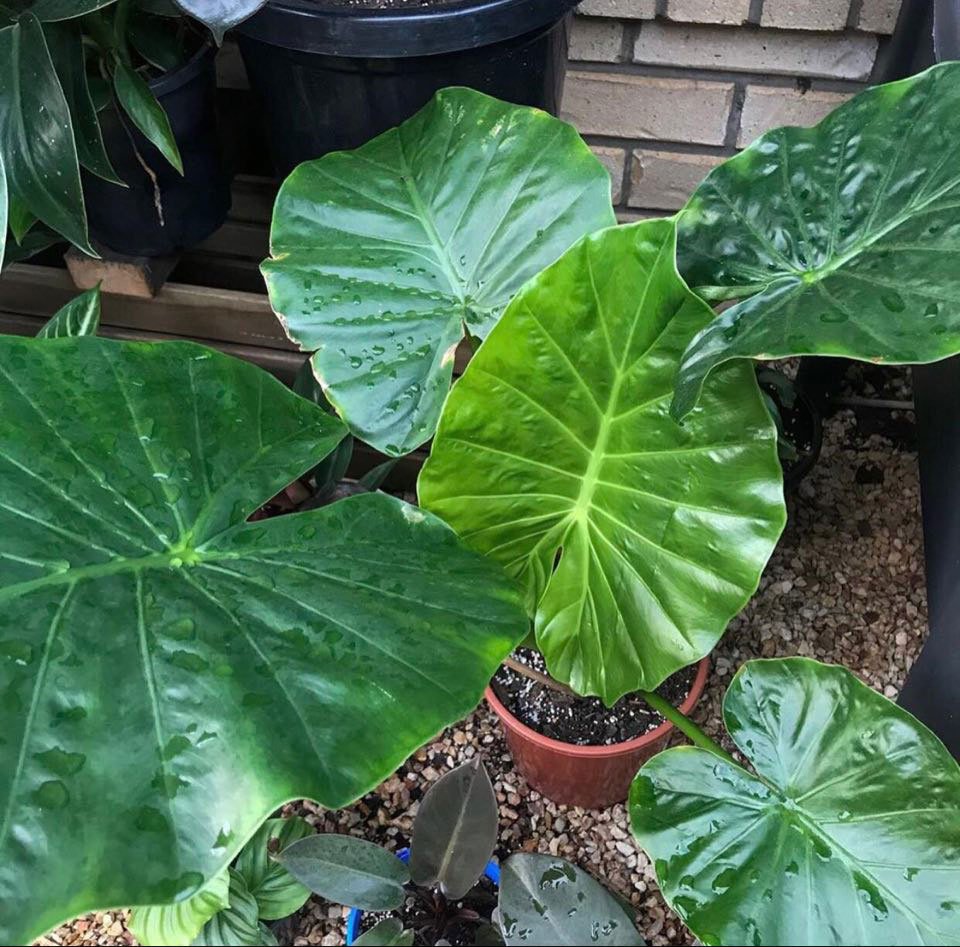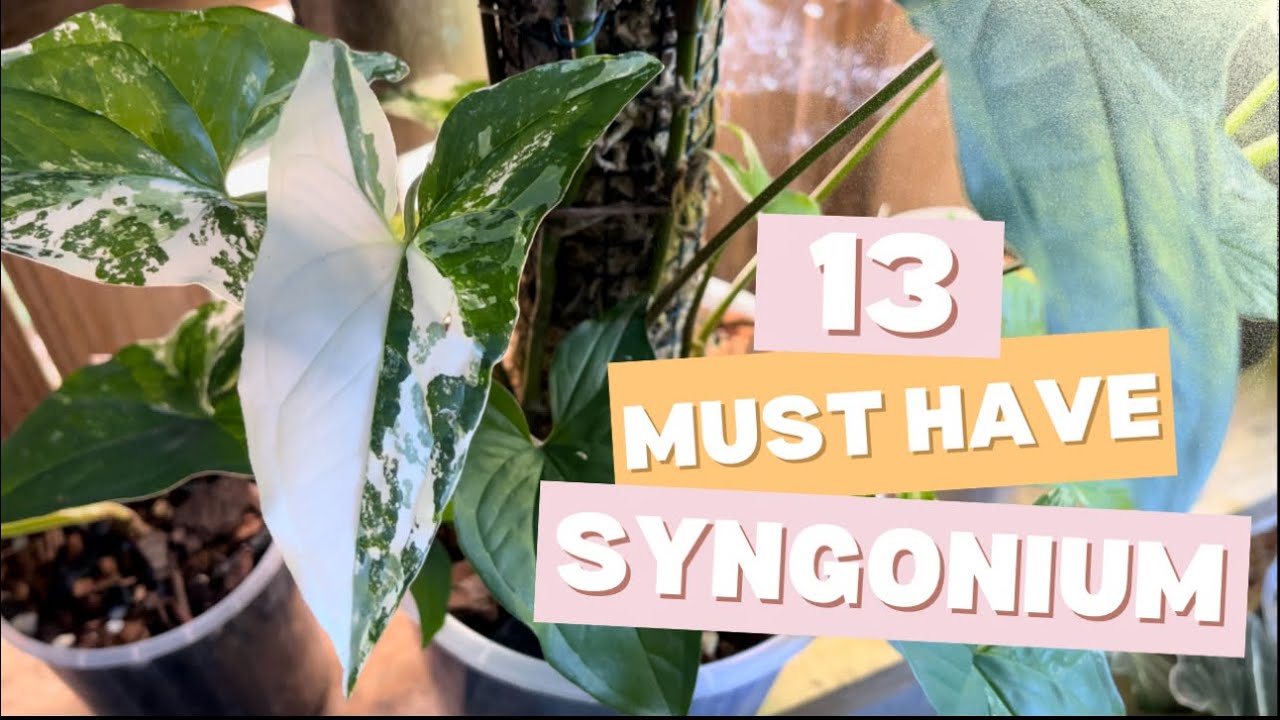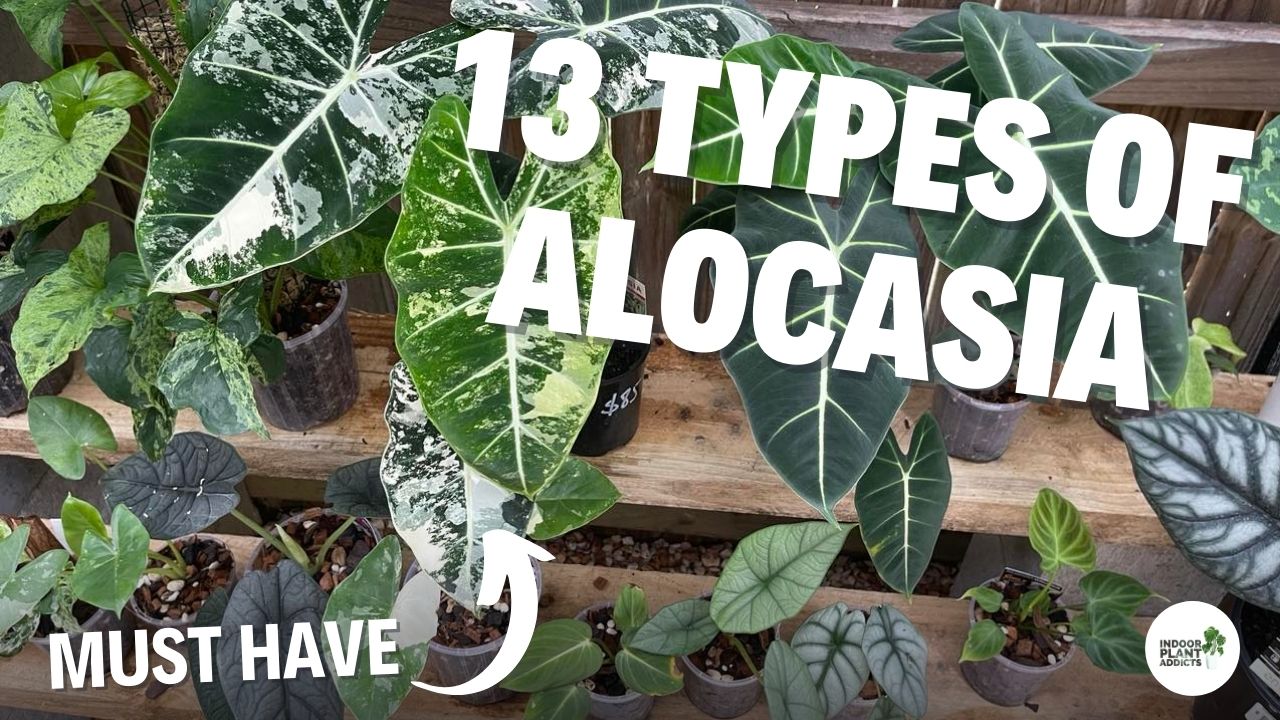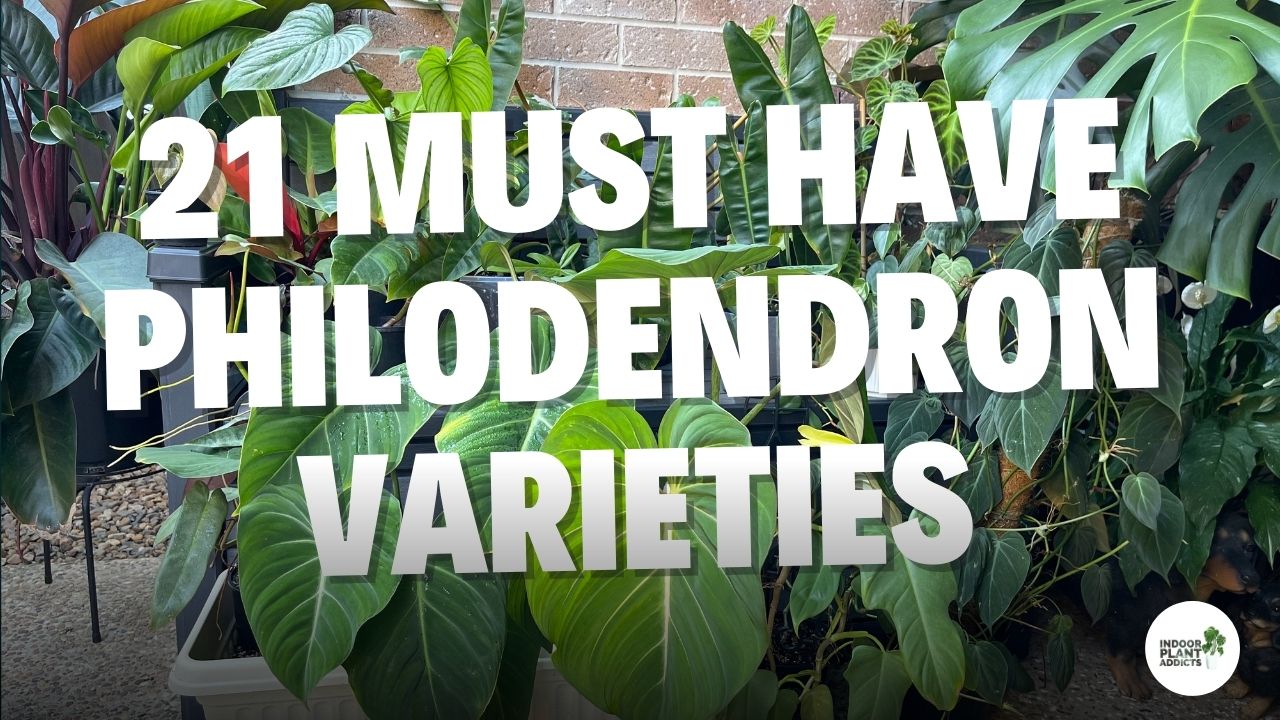Alocasia Macrorrhiza a.k.a Elephant Ear

Elephant Ear Quick Overview
| Full Size | 6 foot |
| Light | Bright indirect |
| Temperature | 65- 80°F (18-26˚C) |
| Humidity | Medium-high |
| Cost | $ |
| Care Level | Easy |
| Toxicity | Toxic |
Elephant Ear Plant Size
The mature size of an Elephant Ear is up to 8 foot in height with leaves reaching up to 3 feet long. You can expect your Elephant Ear to reach up to 6 feet or more in height indoors.
Elephant Ear Light Requirements
Elephant Ear will grow best when in bright indirect light. This plant can tolerate some direct sunlight but you need to cautious that it doesn’t burn the foliage. Morning sun is best when the suns rays aren’t as harsh.
Too Much Light
A sign that your Elephant Ear has received too much light is yellowing and/or burnt/scorched leaves. If your plant is housed in a spot where it receives direct sunlight, adding a blind or curtain to your window will help to defuse the harsh sunlight to avoid burning the plants foliage.
Insufficient Light
If your plant isn’t receiving enough light, you may notice stunted/slow growth and small leaves. Moving your plant to a spot where it receives filtered sunlight will help keep your plant happy and healthy.
Alternatively, if you can’t seem to find that perfect spot in your home, you can always use grow lights. Just like direct sunlight, if your plant is sitting too close to the grow lights, they will burn the foliage. Keeping a safe distance of at least 60cm between your plant and the light will avoid any trouble.
Temperature
The ideal temperature for growing Elephant Ear is between 65- 80°F (18-26˚C). You should try and avoid temperatures below 55ºF (12ºC). During the winter months or if you live in a colder climate and temperatures drop below this, you can try Keeping Indoor Plants in Greenhouses. Being kept outside of this temperate range for prolonged periods of time can eventually lead to poor plant health.
Humidity
Elephant Ear will thrive when kept in a medium-high (above 50%) humidity environment. If your plant is housed in a spot with low humidity, you may notice brown leaf tips. Providing humidity for your plants will encourage bigger and healthier growth. There are a few thing you can do that can help bump up the humidity in your home. The things you can try are:
- Misting your plants
- Pebble trays
- Grouping plants together
- Humidifier
If you are struggling with Humidity for your indoor plants make sure to see our guide to humidity.
Watering Requirements
Elephant Ear will require water at least once a week. This will change during the cooler months when the temperature and amount of sunlight is changing. You should check the top 1-2 inches of soil with your finger to feel if it’s still moist. If the soil feels dry, you can give your plant a drink. A sign your Elephant Ear needs water is drooping leaves.
Overwatering Elephant Ear
Elephant Ear like to be kept in a slightly moist soil but you need to be cautious of over-watering. Excess water to the soil causes it to become waterlogged, which can lead to rotting roots as a result of not enough oxygen for the plants roots to breath.
Rotted roots can no longer take in any water or nutrients to the plants which causes fungus issues, pest problems and root-rot. A sign that you may have over-watered your Elephant Ear is yellowing leaves.
Fertilizing requirements
You should fertilize your Elephant Ear monthly during Spring and Summer. You can cut back during the cooler months when the plant is no longer actively growing/goes dormant. Fertilizing your plants gives them the essential nutrients they need for promoting and maintaining new and healthy growth. Applying fertilizer when the plant isn’t actively using up the nutrients in the soil can cause salt build up and root burn.
Best Fertilizer for Elephant Ear
The best fertilizer to use for Elephant Ear would be a balanced all purpose fertilizer (20-20-20) diluted to half strength. Slow release fertilizers are a great alternative to a liquid fertilizer. Slow release fertilizers require less applications and allow your plant to take the nutrients as it needs them. You should try and avoid cheaper fertilizers that contain heavy salts as they can damage the roots and even cause plant death.
Over Fertilizing
When it comes to fertilizing your Elephant Ear, you need to be cautious of over-fertilizing. Over-fertilizing your Elephant Ear can cause salt build up and burn the roots and foliage. If you think you’ve over-fertilized your plant you can either change the soil or rinse the excess out. The water color will change once the fertilizer has been rinsed out.
Soil Requirements
Elephant Ear likes to be in a rich, well draining soil. It’s best to try and avoid wet, mucky or dry and sandy soils. To achieve a good well draining soil, you can use a mix of potting soil, orchid bark, peat moss, charcoal and perlite.
These ingredients help to create better drainage and aeration. Air flow is important in potting soil as it allows the plants roots to breath and not having enough oxygen to the roots can cause them to eventually start rotting.
Adding garden compost or worm castings to the soil will add more richness which this plant will love. You can also add other ingredients like coco coir, coconut husk and mulch chunks to the soil to help restrain moisture.
Elephant Ear like to be kept in a moist soil so it’s important to use ingredients that will hold moisture but not make the soil soggy.
Diseases & Pests
The most common pests that you can encounter whilst caring for your Elephant Ear are spider mites, thrips, scale and mealybugs. The common diseases you may encounter are root-rot, bacterial leaf spot, phyllosticta leaf spot and leaf blight.
The best thing you can do when it comes to pests on houseplants is to try and avoid any pest infestations from starting. There are a few things you can do that will assist in preventing any pest infestations and these things are:
- Checking new plants for pests or isolating new plants for up to a week.
- Check your plants every few days for pests.
- Trim off any dead or dying leaves.
- Wipe down leaves if you notice them getting dusty.
- Keeping your plants healthy. A healthy plant will be able to handle an infestation better than those that aren’t as happy.
- Isolate any plants that have pests.
Following this will assist in keeping pests away as well as catch them early on before any severe infestations are able to start. Keeping plants healthy and in the correct living environments can help to deter any pests from invading your plants.
Toxicity
Elephant Ear contain Calcium Oxalate Crystals which is toxic to both humans and pets if ingested. If any part of the plant is ingested, symptoms may include swelling of the oesophagus, GI tract and mouth. If ingested by pets, the symptoms may include vomiting, lack of appetite, drooling and pawing at the mouth. Plant should be kept out of reach of small children and pets.



